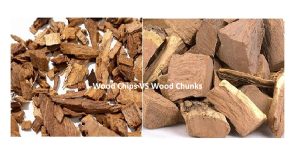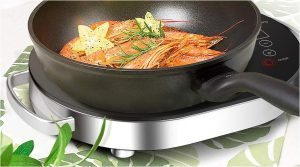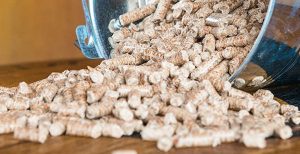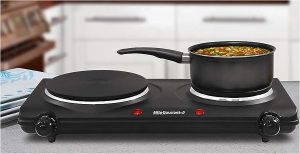Grilling and Smoking with a Gas Grill
If you’re wondering if you can use a gas grill as a smoker, the answer is yes! In fact, many gas grills can be used as smokers with the help of a smoker box or by wrapping wood chips in aluminum foil. This allows you to infuse your food with delicious smoky flavors without the need for a separate smoker.
Popular gas grill brands like Weber can also be used as smokers, giving you even more options for smoking your favorite meats and vegetables. Just be sure to follow safety precautions and monitor the temperature of your grill to ensure consistent smoking.
If you’re using a propane grill as a smoker, use wood chips in moderation to avoid inhaling too much smoke. You can also use a smoker box on a gas grill to help regulate the amount of smoke produced.
Can You Use a Gas Grill as a Smoker?
Yes, you can use a gas grill as a smoker. While gas grills are primarily designed for direct heat cooking, with the right techniques and equipment, you can transform your gas grill into a smoker to achieve delicious smoky flavors in your food.
To convert your gas grill into a smoker, you will need to create an indirect cooking zone and utilize smoking accessories such as smoker boxes or smoker tubes.
To create an indirect cooking zone on your gas grill, you can turn off one or more burners and place your food on the unlit side. This allows the food to cook slowly with indirect heat, similar to a traditional smoker.

Adding soaked wood chips or chunks to a smoker box or smoker tube, and placing them over the lit burner(s), will generate smoke that infuses your food with smoky flavor.
It’s important to monitor the temperature inside the grill and make adjustments as needed to maintain low and steady heat. This can be done by adjusting the gas flow and using the grill’s vents to control airflow.
Patience is key when using a gas grill as a smoker, as the cooking process will take longer compared to grilling at higher temperatures.
Learn More: Smoking on a Charcoal Grill: Tips to Reduce Excess Smoke
What Is The Difference Between a Grill and a Smoker?
The main difference between a grill and a smoker lies in the cooking methods and the flavors they impart to the food. A grill is designed for direct heat cooking at higher temperatures, while a smoker is used for low and slow cooking, infusing the food with smoky flavors.
Grills typically use direct heat from gas burners, charcoal, or electric elements to cook food quickly over high temperatures. They are ideal for searing steaks, grilling burgers, or cooking vegetables. Grilling imparts a charred and slightly smoky taste to the food, but it doesn’t provide the deep, intense smoky flavor that smokers offer.
On the other hand, smokers are designed for slow cooking at lower temperatures, often using indirect heat. They utilize wood chips, chunks, or pellets to generate smoke that surrounds the food, infusing it with rich smoky flavors.
Smokers are perfect for smoking meats, fish, poultry, and even vegetables. The slow cooking process allows the food to become tender, juicy, and imbued with a pronounced smoky taste.
How To Smoke On A Propane Grill
1. Preheat the grill: Preheat your gas grill to the desired temperature. For this, you’ll want to keep the temperature between 225-250°F.
2. Prepare the wood chips: Soak your wood chips in water for at least 30 minutes before using them. This will help them to smoke and burn more slowly.
3. Add the wood chips: Once your grill is preheated, add the soaked wood chips to a smoker box or wrap them in aluminum foil with holes poked in the top. Place the smoker box or foil packet directly on the grill grates over one of the burners.
4. Set up the meat: Place your meat on the grill grates on the opposite side of the smoker box or foil packet. This will allow the smoke to circulate around the meat and infuse it with flavor.
5. Monitor the temperature: Keep an eye on the temperature of your grill and adjust the burners as needed to maintain a consistent temperature. You may also need to add more wood chips periodically to keep the smoke going.
Mastering Smoke Intensity and Flavor
Now that you have your makeshift smoker box ready, let’s talk about controlling the smoke. The intensity and flavor of the smoke can vary depending on several factors, giving you the freedom to customize your culinary creation.
Wood Chip Choice:
Different wood chips impart distinct flavors. Experiment with hickory for a strong, bacon-like flavor, applewood for a mild sweetness, or mesquite for a bold, earthy taste.
Soaking vs. Dry Chips:
Soaking wood chips can help them smolder longer and produce more smoke, but it can also lower the grill’s temperature. Dry chips ignite faster, providing a quick burst of smoke. Try both methods to see which suits your preference.
Chip Quantity:
The amount of wood chips you use will directly affect the smoke intensity. Start with a small amount and gradually add more until you achieve your desired smokiness.
Indirect Heat:
Place your smoker box over an unlit burner, ensuring the food cooks with indirect heat. This prevents flare-ups and ensures a consistent smoke flavor.
Temperature Control:
Maintain a low and slow cooking temperature, typically between 225°F and 250°F (107°C and 121°C), for optimal smoking results. Adjust the grill burners accordingly to maintain this range.
What Are The Precautions To Consider When Smoking On A Propane Grill?
1. Safety: Always follow the manufacturer’s instructions for your gas grill and smoker box. Keep a fire extinguisher nearby and never leave your grill unattended.
2. Temperature control: It’s important to maintain a consistent temperature when smoking on a gas grill. Use a thermometer to monitor the temperature and adjust the burners as needed.
3. Smoke production: To produce smoke, you’ll need to use wood chips. Too much smoke can be harmful to your health. Use wood chips in moderation and avoid inhaling the smoke directly.
4. Cleaning: After smoking on your gas grill, be sure to clean it thoroughly to prevent any leftover ash or debris from affecting future grilling sessions.
Learn More: 5 Common Alfresco Grill Problems and How to Solve Them





